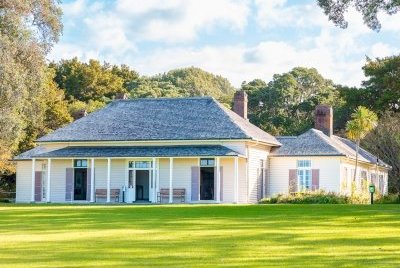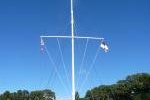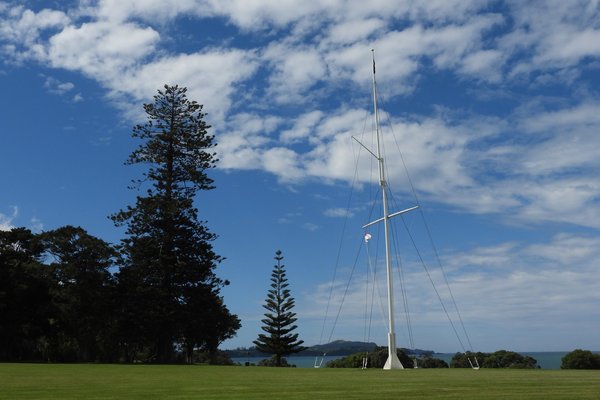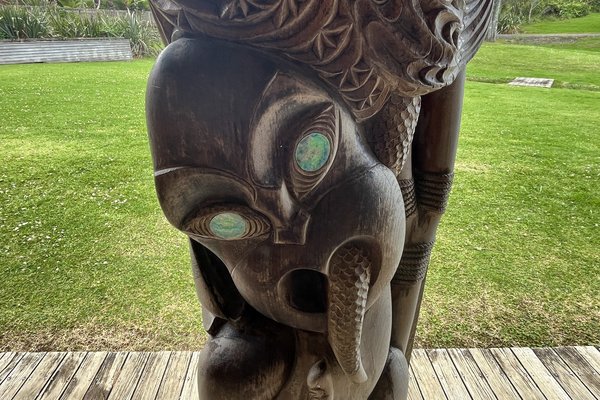New Zealand
Waitangi Treaty Grounds historic precinct
Waitangi Treaty Grounds historic precinct is New Zealand’s pre-eminent historic site, and commemorates the signing of the Treaty of Waitangi between the Maori and the British Crown in 1840.
The British components of the site consist of the Treaty House, New Zealand’s first pre-cut building, and a flagpole marking where the treaty was signed. The Maori components consist of Te Whare Runanga, a traditionally carved meeting house, and Ngatoki Matawhaorua, a 35-meter canoe, both constructed for the centennial observation of the signing of the treaty.
Site Info
Official Information
- Full Name
- Waitangi Treaty Grounds (ID: 5127)
- Country
- New Zealand
- Status
-
On tentative list 2007
Site history
History of Waitangi Treaty Grounds historic precinct
- 2007: Added to Tentative List
- Added to tentative list
- Type
- Cultural
- Criteria
Links
- UNESCO
- whc.unesco.org
All Links
UNESCO.org
- whc.unesco.org — whc.unesco.org
Community Information
- Community Category
- Secular structure: Memorials and Monuments
Travel Information
Recent Connections
News
No news.
Recent Visitors
Visitors of Waitangi Treaty Grounds historic precinct
Community Reviews
Show full reviewsCarlo Sarion
Waitangi Treaty Grounds historic precinct
Waitangi Treaty Grounds historic precinct (On tentative list)

The Treaty of Waitangi was signed in 1840 at what is now called Te Pitowhenua Waitangi Treaty Grounds, perhaps Aotearoa New Zealand’s most important historical site. How the principles of this document are acknowledged and even embedded in schools, public offices, and workplaces reflects its fundamental importance. It is also registered in UNESCO Memory of the World. I visited the site in April 2022, and I thought it would be a good opportunity to write a quick review since the last and only review was written a decade ago.
I took a 3-hour InterCity bus from Auckland to Paihia. This town is also an ideal base for exploring the Bay of Islands and the neighboring Kerikeri Basin Historic Precinct, another tentative UNESCO WHS site. Across Paihia is the town of Russell, the country's first capital. I visited the site on a sunny afternoon, and it was a pleasant 30-minute stroll from Paihia Wharf. Visitors may buy the ticket online (currently NZ$60 for international adult visitors, free for kids), though I chose to just buy at the visitor center. The ticket includes a guided tour of the site and a Māori cultural show, both of which have fixed schedules per day.
To the left of the visitor center is the Te Kōngahu Museum of Waitangi, a small but gorgeous building that provides visitors with the historical background of the site. Visitors walk through bushes and canopies before arriving at an open shelter that contains the Ngātokimatawhaorua …
Keep reading 0 commentsSolivagant
Waitangi Treaty Grounds historic precinct
Waitangi Treaty Grounds historic precinct (On tentative list)

The signing of the Treaty of Waitangi in 1840 is presented as THE significant event in the creation of the New Zealand as it exists today - that country’s “founding document”! In recent years the Treaty has undergone something of a “resurrection” in NZ after a long period of being ignored or, at best, “honoured” in theory as the moral basis for colonialisation and an example of how race relations should be conducted in colonial situations. More recently it has been the means through which NZ has tried to address the residual problems of its relationship with the Maori people. Despite its issues of interpretation and legal uncertainties it is generally promoted as having been a “good thing” even to the extent of making its day of signing a National Holiday. As such it is hardly surprising that the location where it happened is something of a “national shrine” for New Zealanders. But us that enough to make it suitable as a WHS? And is it worth visiting anyway if you are a non-New Zealander?
There are very few WHS sites inscribed primarily because of what happened there – and, where there are, they tend to be of “World significance – e.g Hiroshima and Auschwitz. Also, the WH Convention requires that there be tangible remains with OUV rather than merely a metaphysical link to the event – however important. Leaving aside whether the signing of the treaty was a “world significant” event, what are the “tangible remains” of the …
Keep reading 0 comments

